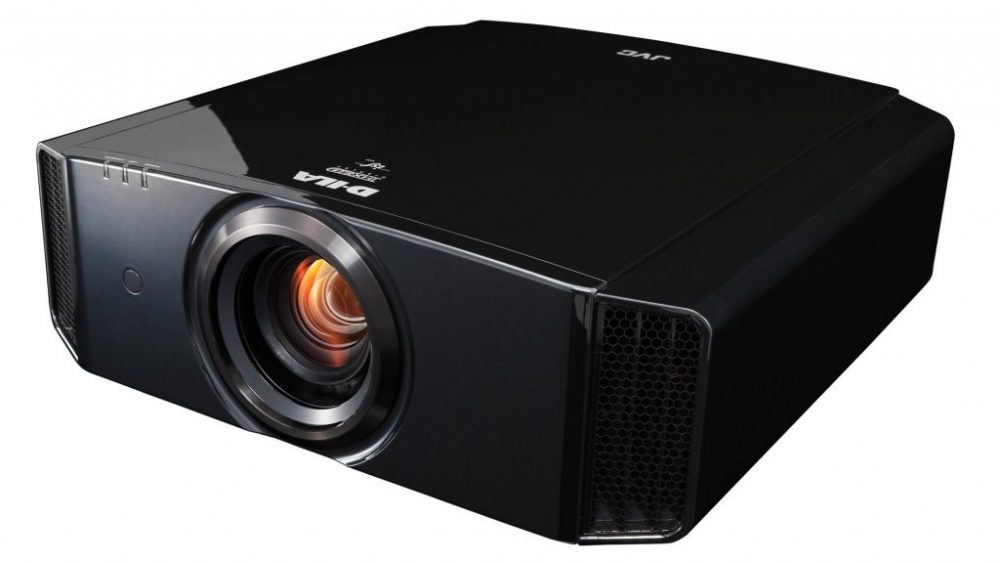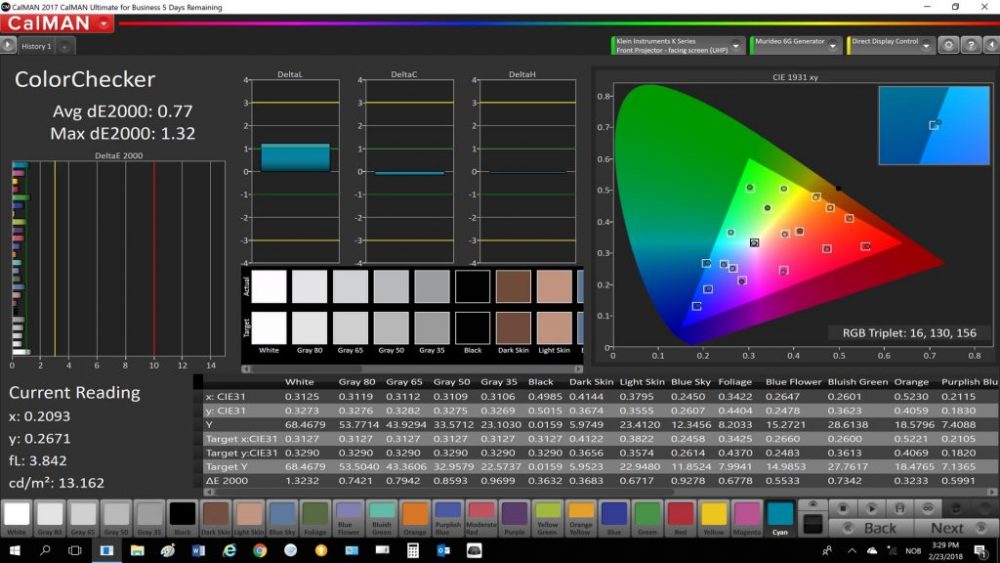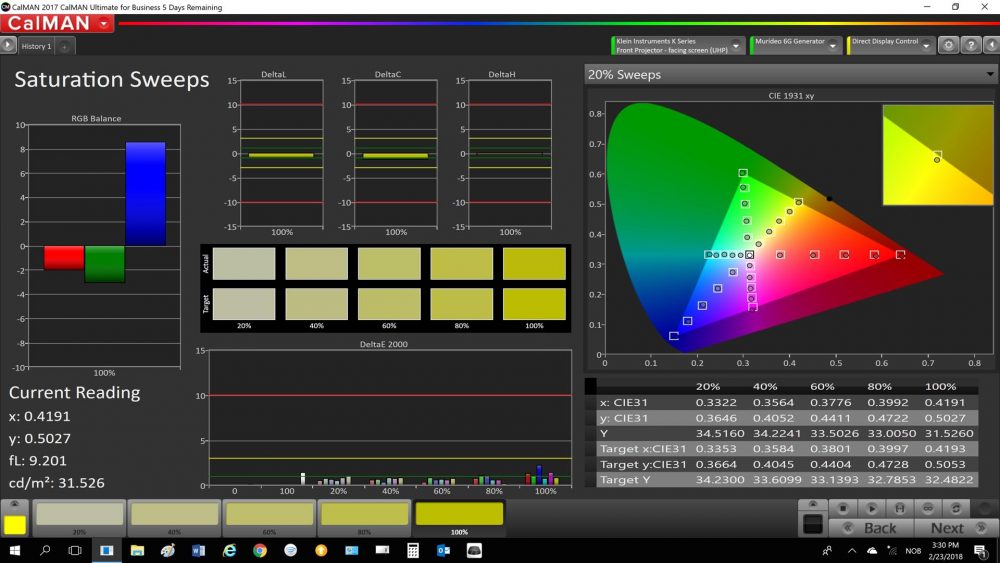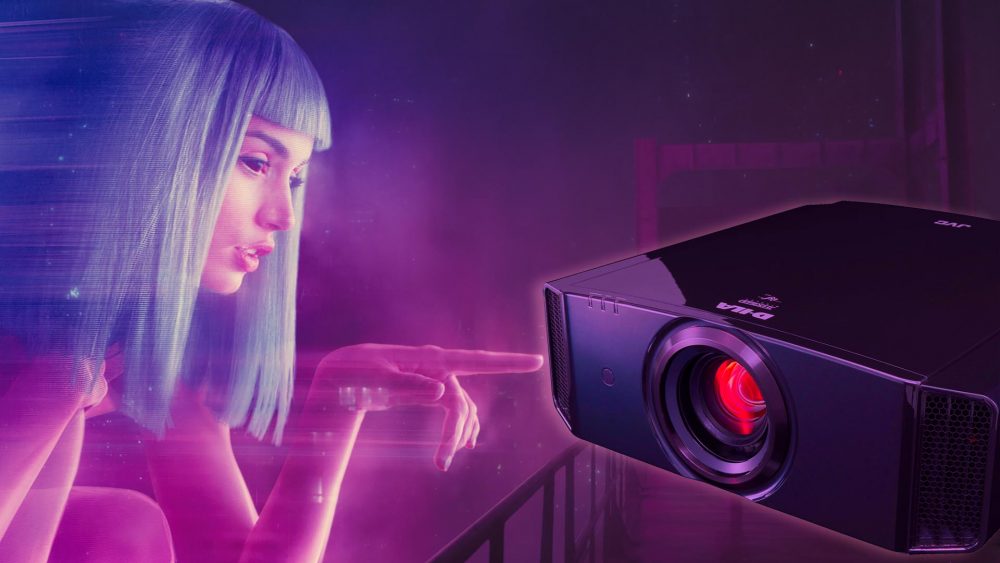The DLA-X7500 did not remain on the market long before it was replaced by the DLA-X7900. If you bought the predecessor, relax. It is essentially the same projector. There are two things that are new: a better-implemented rendition of HDR content (video with additional dynamics in light – i.e. “brighter than white”), and a new and improved eShift that simulates 4K Ultra HD resolution.

How does eShift work? It works well. The projector’s image panel has “only” regular HD resolution, and to display a more fine-grained picture on the projector screen, the picture is redrawn from an optical processor (engine), shifting diagonally a half-pixel in length relative to the original image. The shifted image attempts to fill in the missing information.
Now eShift is available in version 5, which should provide better processing with 4K video sources, and be better at adding the right information to each pixel. Keep in mind that each pixel is still as big as it is on a standard HD panel, and since they overlap, the image will never be as sharp as a genuine 4K projector. But it can get pretty close.
All projectors in this price range have dynamic irises, which by restricting and opening controls the light levels, and this is done first and foremost to make black even blacker during dark scenes. As its predecessor, DLA-X7900 has two irises; an inner and an outer, which provide better control of the black level in dark scenes. By restricting the inner iris somewhat, it prevents a lot of stray light from being transmitted into the projector’s optical system.. The remainder is handled by the outer iris.
Moreover, the projector as its predecessor has a relatively high brightness level, specified to 1,900 Lumen, and an impressive black level of 1.3 million to one in dynamic black level. Panel contrast is claimed to be 130,000:1. And even though this is very optimistic, we can assure you that the black level is amazing!
Usability
With fully automated optic adjustment, all zoom, sharpness, and lens shifts can be done with the remote control, and the projector can store them in two memories. If you have a 2.35:1 projector screen, you can, for example, make a setting for that ratio and one for 16:9, and easily switch between these with your remote control.
JVC has the possibility of some sort of auto calibration of the gamma, setting up a Datacolor Spyder5 measurement probe and launching the built-in calibration program via the PC. If there is any skewness in the colours compared to the grey scale, these will be corrected automatically. However, it’s a good idea to get a calibration expert to do the last bit with the colour temperature.
Nothing has happened to the menu since the previous one. This one looks like it was created in 1992 and is reminiscent of the BIOS setup on an old PC. If you have to connect it to a PC for calibration, it does not automatically get an IP address, but we have to go in and turn on the DHCP.
Picture quality
Uncalibrated straight out of the box, the projector produces great images, and there is no doubt that the extra contrast in the black level adds extra punch to the pictures. The dark scenes in Blade Runner 2049 – and there are many – get a third dimension in the image, a depth that few other projectors can boast. By dragging the blackest down to pitch black, the objects stand out from the background impressively. This is absolutely in line with what we are accustomed to from JVC, and is unrivalled in this regard.

But beware: if you open the door slightly and let in even a ray of light, the details disappear in the shadowy areas, and things begin to merge. Thus, it may be advantageous to set the image mode to slightly lighter, in situations where you don’t want, or can’t achieve, complete darkness in the room.
The colours also look very good right out of the box. This was confirmed when calibration expert Gorm Sørensen brought out his measuring equipment. The projector follows the gamma curve and the colour space is near perfect! The average delta deviation is 0.83, which is well below 1, which is considered perfect. Simply put, the colour space is tip-top! The only thing Gorm has to do is to slightly adjust the actual colour temperature. This is very impressive, and indeed on a par with the Sony VPL-VW760. that is three times as expensive.

JVC does have some issues with the 4K Ultra HD material. The stubble and pores on Ryan Gosling in blade Runner 2049 are not as detailed and nuanced as with the genuine 4K projector Sony VW360. AIn addition, the structure of the sand-coloured room where villain Niander Wallace kills a replicant, lacks some nuances compared to the Sony.
And it’s not just in the resolution. Although JVC has improved its HDR rendering since its predecessor, it’s still not good enough. The HDR-encoded video simply gets dark with the JVC projector. You can compensate by increasing the contrast, but it doesn’t look right. The colours don’t look right, and it is still too dark in general. The expanded colour space you get with HDR is also not enough for us. We therefore prefer to disable the HDR in the Blu-ray player. The details in dark and semi-dark areas then appear completely different.
Conclusion
JVC DLA-X7900 is a superb projector, and if you have a dark cave, then it’s the king of dark movie projection. The black level is simply in a league of its own! In addition, it has good enough brightness to also bring out the highlights in bright areas.
We are also very fond of the fact that the projector almost doesn’t need to be calibrated, as it follows the colour space perfectly, right out of the box. No projector we’ve seen in this class delivers such good images straight out of the box.
However, the projector is not as good in terms of 4K content from Ultra HD Blu-ray. First of all, it is not as fine-grained as a genuine 4K projector. In addition, HDR content with a high dynamic range does not work particularly well. The images are generally too dark, and that is a high price to pay for the small payoff of extra high light you get from the HDR effects. No, you should disable the HDR on this.

We think
Exceptional black level coupled with perhaps the best colour rendition we have seen right out of the box, makes this a very good projector. You cannot get the image sharpness of a true 4K projector, and HDR content is way too dark.
69999 €
Specifications
Technology: D-ILA (LCOS)
Resolution: 1920 x 1080 (4K e-SHIFT5)
Panel contrast: 130.000:1
Dynamic contrast: 1.300.000:1
Brightness: 1,900 Lumen
Lamp lifespan: 4,500 hours (low mode)
HDR: Yes (HDR10)
Optical lens adjustment: Yes
Distance to 100” 16:9: 3.1 – 6.2 m
